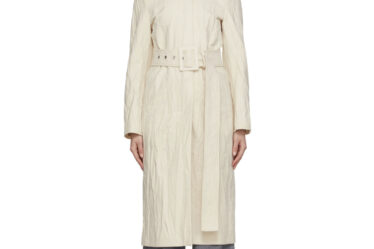
Online resale may not be the most profitable sector, but it is attracting shoppers.
Last year, the total value of merchandise sold on resale platforms in the US reached $20 billion, up 11 percent on 2022, according to a report published by resale platform ThredUp and analytics firm Global Data on Wednesday. Gross merchandise value is expected to more than double to $44 billion by 2028, outpacing the wider apparel sector.
Over the last few years, companies from Balenciaga to Shein have dipped their toes in the market, with the number of businesses offering branded resale rising from just nine in 2020 to 163 by the end of last year, the report found. Though these efforts are currently largely small-scale, two thirds of brands that already offer resale expect it to make up 10 percent or more of their revenue within the next five years, according to the report.
If this actually happens, it would represent a seismic shift in the market. At present, the platforms leading the resale revolution are under pressure to deliver on profitability ambitions and most brands are still in the early stages of their engagement with secondary sales.
ThredUp’s US business broke even on an adjusted EBITDA basis for the first time in the third quarter and its revenue rose to a record $322 million last year. But the company still recorded a net loss of $71 million. The RealReal reached EBITDA profitability in the fourth quarter for the first time since going public in 2019, reflecting a push to prioritise profitability over growth. Sales in the period were down 10 percent and its net loss amounted to $22 million. Both companies have lost some 90 percent of their value since going public.
Meanwhile, few brands break out details of how resale is contributing to their overall financial performance. One of the few that does is H&M Group, which owns a majority stake in Sellpy, one of Europe’s largest resale platforms. The company contributed less than half a percent to the Swedish fast fashion giant’s net sales last year and has yet to break even.
Nonetheless, resellers are inching towards their profitability goals and a combination of consumer appetite for value products, sustainability concerns and opportunities for brands to reach and retain customers is expected to continue to drive momentum in the market. “Brands are still pretty early in figuring this out,” said ThredUp CEO James Reinhart. “The number of people engaging in resale is growing.”
Regulation is expected to help too, with policymakers in Europe and the US considering legislation that would support the sector’s growth. “It’s going to be critical,” said Reinhart. “There’s a role for governments to create positive incentives for consumers to think secondhand and hold producers accountable for some of the stuff they’re creating.”
Learn more:
Can Fashion Resale Ever Be a Profitable Business?
Companies like The RealReal and ThredUp promised Wall Street that with scale comes profit. But operational costs and competition have kept them in the red.



